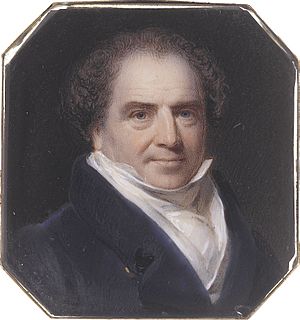Edward Banks (builder) facts for kids
Sir Edward Banks (born January 4, 1770 – died July 5, 1835) was an important English civil engineer. He was also a pioneer in the early days of steamships.
Early Life and Career
Edward Banks was born in a place called Hutton Hang in North Yorkshire, England. When he was young, he spent two years working at sea. In 1789, he started working as a day labourer, which means he did daily manual work.
He worked for a famous engineer named John Rennie the Elder. Edward Banks helped build important projects like the Lancaster Canal and the Ulverston Canal. He was very good at his job and quickly moved up. He became a key partner in a company called Jolliffe & Banks. This company was known for building large public works projects.
Building Great Structures
The company Jolliffe & Banks built many impressive structures across England. They were responsible for creating bridges, dockyards (places where ships are built or repaired), lighthouses, and even prisons.
Some of their major projects included the Staines bridge. They also worked on naval facilities at Sheerness dockyard. They even created new channels for important rivers like the Ouse, Nene, and Witham in Norfolk and Lincolnshire.
Perhaps their most famous projects were the bridges they built in London. These included the Waterloo Bridge, Southwark Bridge, and the famous London bridge. Edward Banks became very successful and earned a lot of money from these big building projects.
Family Life and Achievements
Edward Banks married Nancy Franklin in 1793. They had five sons and three daughters together. After Nancy passed away in 1815, he married Amalia Pytches in 1821. She was the sister-in-law of his business partner, William John Jolliffe.
Edward Banks lived in Adelphi Terrace in Westminster, London. He also owned large country properties near Dover and in Kent. He was also interested in new technologies. In 1824, he invested in the General Steam Navigation Company. This company helped develop early steam-powered ships.
In June 1822, Edward Banks was given the title of Sir. This was a special honor for his work building the Waterloo and Southwark bridges. He passed away on July 5, 1835, at his daughter's home in Sussex.
There's a story that he chose to be buried in the quiet churchyard of Chipstead because he loved the village. However, it's more likely he chose it because the Jolliffe family, who were his relatives and business partners, were connected to that church.


